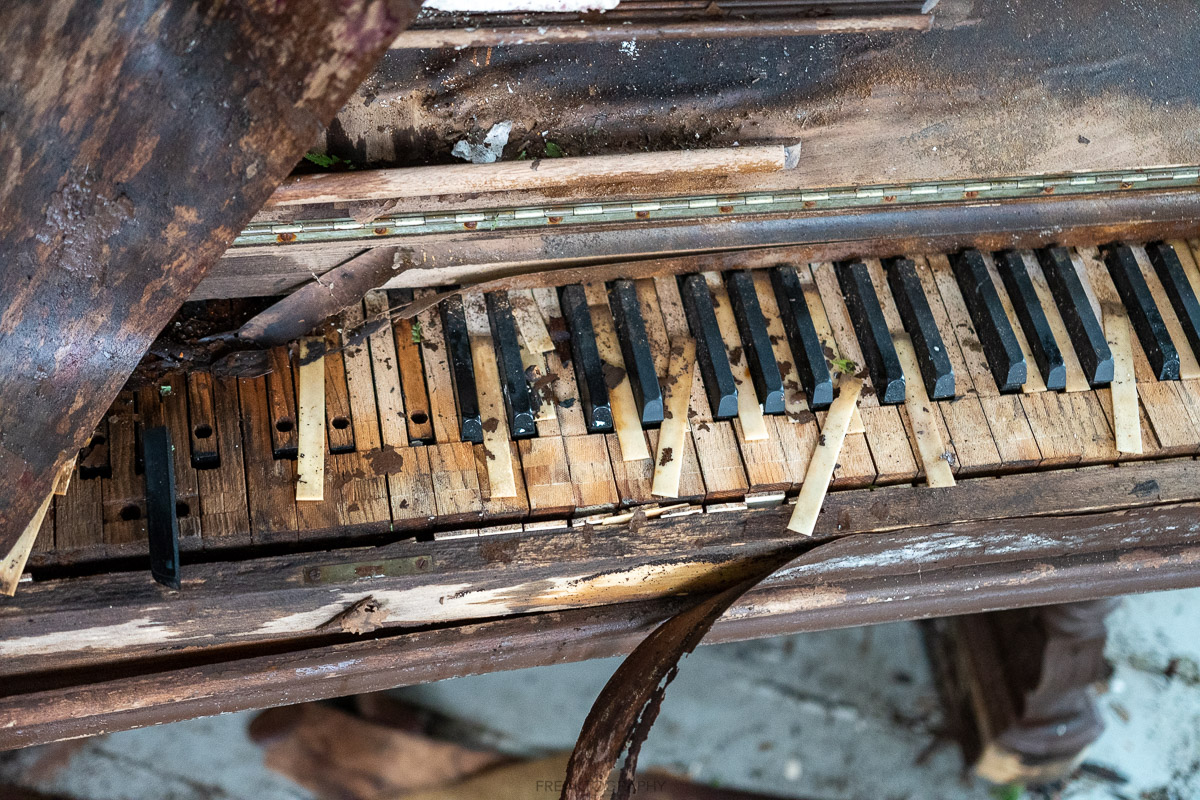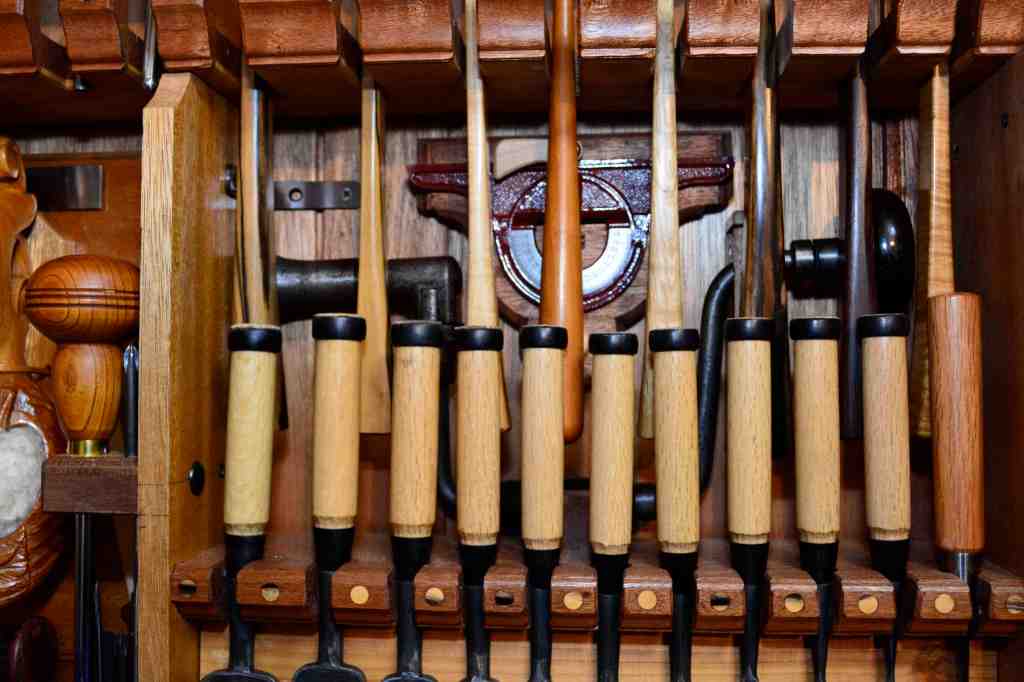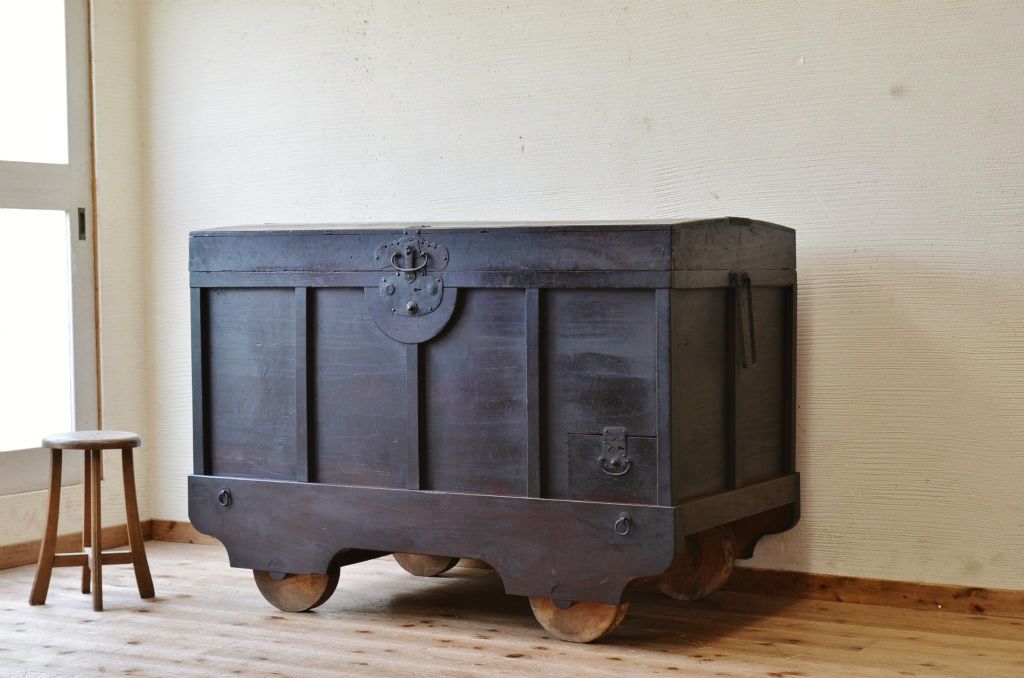She walks in beauty, like the night
Lord Byron
Of cloudless climes and starry skies;
And all that’s best of dark and bright
Meet in her aspect and her eyes…
Gary, a truly Beloved Customer, has produced a well-designed and beautifully-executed chest of drawers to be the base of a future larger tool cabinet. The joinery is amazing, and his solutions to the challenges tool cabinets and chests all face are excellent. He was kind enough to put together this guest post for the edification of our Gentle Readers. We hope you enjoy it as much as we did.
YMHOS
Introduction
I’ve been avidly following Stan’s series of posts about tool storage because I’m deep into making my own tool cabinet. After some back and forth with Stan to get his input on some design and hardware options, he asked if I would write a guest post to describe my efforts. I now have completed the chest of drawers, which will be the base for a future upper cabinet. In this post I’ll describe my design decisions and the chest’s unusual construction.
If anyone would like more details, I have a lengthy thread describing the build in even more detail at the Woodworking forum at OWWM.org. (Free registration is required. It is a wonderful site if you are interested in restoring and using vintage woodworking machinery).
Design Criteria: Functionality
Overall Dimensions
I wanted my tool cabinet to hold the hand tools and other items I use frequently at the bench. It had to fit behind my workbench and in front of a dust collector bin, restrictions that defined the cabinet’s dimensions, which for the chest discussed in this article are roughly 37 inches tall (including the casters) by 18 inches deep, by 32” wide. The upper cabinet will be about 48 inches tall, 60 inches wide with the doors open, and 12 inches deep.
Mobility
This chest had to be mobile because I occasionally need to empty the dust collector bin behind it and access both some closet storage near it and a hatch to the garage attic above it.
Durability & Tool Protection
It also had to be sturdy, durable, modifiable, and repairable. I made modest efforts to protect against dust. I was not concerned about protecting my tools from humidity swings or security since the cabinet will stay in a secure, conditioned space where the relative humidity is between 40% and 60% year round.
Research & Planning
Visually, I wanted the chest to appear, in Stan’s words, “Workmanlike…with some subtle decorative details.” I also wanted it to have a Japanese aesthetic without being a reproduction of a Japanese tansu.
After researching different tool cabinet designs that might fit my criteria — Jim Tolpin’s Toolbox Book was particularly helpful — I started sketching a preliminary design. I decided to combine two kinds of storage: a chest of drawers for smaller items below, and a cabinet with doors above for longer and larger tools.
Initially I drew the chest with full-width drawers to hold larger items, but potential sagging became a concern and I didn’t much like their appearance in my planning sketches. I compromised by having one wide drawer on top and two banks of narrower drawers below supported in the center by a stile.
The upper cabinet design is still in progress. The sketch in Figure 2 above shows planes resting on a slanted surface, but I have decided to store them horizontally to maximize space instead.
One goal I had for the chest was to use mostly interlocking mechanical joints rather than conventional glued/screwed case construction. Joining it mechanically was both an intellectual and design challenge as well as an opportunity to learn new joinery skills. My “tutor” in this effort was Chris Hall, who explored and described this kind of construction in his blog The Carpentry Way, and in several self-published monographs and tutorials. Sadly, Chris passed away in April of 2020. While I am not the craftsman he was, I’m pleased to have a made piece that reflects his approach to woodworking.
I quickly realized that the build would be complicated enough that using a CAD program would help me draw and visualize the interlocking joints. I took a few weeks to learn enough Sketchup to ensure I didn’t miss any critical dimensions.
Wood Selection
I chose to build the chest from black cherry (Prunus serotina) because this wood is readily available at a reasonable price in my area, is excellent for joinery, and ages nicely.
For the interior I used quarter-sawn sycamore (Platanus occidentalis) because it is relatively hard and stable—and I had recently purchased 100 board feet of it for almost nothing.
I used quarter-sawn Oregon white oak (Quercus garryana) for the drawer sides because it is hard, abrasion resistant, and I can get it locally from a friend whose family runs a sustainable forest and sawmill.
Mobile Base & Joinery
Casters
I considered wheels made from plain iron and with rubber, neoprene, or urethane treads, but selected cast iron, industrial-quality casters for their durability and for the look of iron. I also wanted them to swivel.
I spec’d them to accommodate at least twice the combined weight of the lower chest and upper cabinet when fully loaded.
I decided to use vintage hardware, and I eventually found a set of used Bassick brand cast iron swivel casters with hardened steel carriages, needle roller bearings, and grease fittings. Bassick has been making industrial casters since the late 1800’s. These are probably from the early to mid-1900’s but are still in good shape. I could not find their load rating but similar modern casters have load ratings several times the ultimate weight of the cabinet. They should last a long time. I cleaned them up and attached them with stainless steel screws.
These old casters are noisy rolling over my concrete shop floor, but it’s a noise I like.
Mobile Base Joinery
I began the construction process with the mobile base. Its key feature is the three-way corner joint shown below. Chris Hall called it a sanpō-zashi Tsugi no Henka (三方差し継手の変化). I followed his step-by-step construction tutorial.
This joint has a mitered corner to hide end grain, an internal sliding dovetail, a half dovetail, a stub tenon, and two locking keys. The larger through mortise is to receive a tenon in the corner post of the chest of drawers that also passes through the chest sill.
The grooves in the upper surface of the mobile base seen in Figures 5 and 8 are to receive loose splines to connect the base to the chest of drawers, and to reduce stresses on the tenons when moving the assembly around the shop.

The two keys shown in Figure 8 lock the joint together strongly without glue. The keys cannot work themselves out because they are restrained from above by the corner posts of the the chest of drawers.
The Chest’s Frame
The sill and header are constructed with the same joinery as the mobile base but with slightly different dimensions and other small differences. The sill has grooves cut to accept two plywood dust panels. The header is grooved to accept a solid wood top panel.
Center posts help support the drawers. The top drawer is full width. I mortised the posts and stiles to receive tenons on the drawer rails and drawer frames.
Drawer Frames and Guides
The drawer frame sides and guides are quarter-sawn sycamore. Gorgeous, but since these are internal parts, no one will ever see the ray fleck figure unless they remove the drawers and peer inside the chest. I like that.
The drawer frames that support the drawers have cherry front and back rails and sycamore sides. Front rails for the drawer frames are tenoned into the posts with mitered spear points on the show surface. The spear point is partly structural in that it has a larger bearing surface to resist racking better than a typical plain shoulder. It is also a subtle decorative detail that I like a lot. It was challenging to get them all to fit. I was more or less successful but not perfect. I included dust panels of ¼ inch birch plywood in the drawer frames to help limit dust in the drawers. This picture is of a test fit before assembly. The blue tape covers drawer stops that are detailed below.
I tenoned the side rails of the drawer frames into the front rails and also tongue and grooved the side rails into the side guides for extra support for the drawers. Further, the tenons on the front rails also intersect and pass through the tenons on the side guides, locking the side guides in place. The post and side guide “ladder” is extremely rigid to resist racking front to back.
This complicated joinery is difficult to describe and photograph. Here is a Sketchup view of what the drawer rail and side guides to post connection looks like inside the post. A similar joinery locks the drawer rails and drawer guides at the center posts.
Drawer Stops
I wanted both cushioned pull-out stops and cushioned push-in stops to prevent accidentally dumping a drawer full of heavy and sharp tools onto the floor or my feet. I also wanted the stops to be replaceable and adjustable for wear over the years.
For the pull-out stops I found a compact design by Australian woodworker Neil Erasmus that I like. These fit into the underside of the front rail and fall into place by gravity when the drawer is pushed in. When you pull the drawer out, the inside of the drawer back hits the leather padded face of the stop. They lift out of the way with a finger if you want to remove the drawer.
I secured these in-place with hide glue so that they can be replaced if they break after a few decades of banging. The leather cushion is from an old belt of mine that has mysteriously shrunk in length over the years..

The back stops are my own design. They are dovetailed into the lower surface of the back drawer frame rail. They can be adjusted by adding or removing slivers from the back of the stop, and are easily replaceable.
I will have to use them for a while to determine if these are a good idea or not. A friend suggested that stops that hit the end grain of the sides would be better than one that hits the center of the more flexible back. I suspect he is right but this is what I have for now and I can re-do the back stop later if I need to.
Side Panels
The chest’s side panels are book matched, hammer veneered cherry on birch plywood cores, friction fit into grooves on the posts to further help resist racking front to back. I added the small, spear pointed rail there to carry the theme seen on the front drawer rails around to the sides and also help resist racking.
The Frame & Panel Back
The back of the chest is frame & panel construction with mitered and through-tenoned corners. The panels are cherry veneer, hammer-veneered with hide glue onto birch plywood cores.
I friction fit the panels into the frames, and friction fit the back into rabbets in the posts to help resist racking from side to side. These veneered panels give the chest a finished look from the back as well as the other three sides.
The weight of the back helps counterbalances the weight of an open drawer.
The eight odd white bits seen in Figure 20 are loose, removable sycamore tenons that pass through mortises in the back frame and down into mortises in the sill, laterally into the posts, and up into the header, attaching the back. One might use screws to accomplish the same thing, but I liked this idea, again from Chris Hall, who adopted it from a Chinese Ming Dynasty cabinet.
Header
The header frame is grooved to accept a solid wood panel fitted tightly at the front and sides to eliminate any gaps that would collect dust and grit. To accommodate seasonal movement I glued the panel’s front edge into the groove and left a gap at the back, which will be covered by the upper cabinet, so the panel can float.
The odd looking projections seen in Figure 21 are twin sliding dovetail keys that will anchor the future upper cabinet. There will be mating mortises on the underside of the top cabinet. The cabinet will drop onto the keys and slide forward, locking the two pieces together. The upper cabinet will be approximately 12 inches deep, leaving 6 inches of the chest top free.
Drawers
I put extra work into the drawers since they will actually hold the tools. The rest of the chest is just there to keep the drawers off the floor.
I decided early to avoid metal drawer slides because I find side-mounted slides ugly and believe under-mounted slides sacrifice too much drawer depth.
Drawers fronts are attached with half-blind dovetails, and backs with through- dovetail joints. The cherry drawer fronts are cut from a single clear and straight grained 12/4 board that I resawed to match figure and color vertically and horizontally.
For the sides I resawed 4/4 oak stock and hand planed it to ⅜” thick. I chose relatively thin sides both to save material and weight and because I like the look of thinner sides. But they don’t leave much room for a typical ¼” groove for the drawer bottom. To correct for that thinness, I glued on drawer slips of quarter sawn sycamore. Oak would have worked, too.
Drawer slips are, from what I have read, probably a French invention, adopted and most widely used by the British in the 1700’s and 1800’s for finer work but not commonly used in America. Besides providing more “meat” for supporting a groove for the bottom, the slip adds more bearing surface for the drawer. Distributing the drawer weight helps slow the drawer sides from wearing grooves in the runners.
I made the drawer bottoms of sycamore. I slotted the back end of the bottom and screwed to the drawer back to allow seasonal movement.
I’ve also since covered each bottom with a thin sheet of rubberized cork to protect the bottoms from sharp tools and to protect sharp tools from the bottoms.
The design of the half-blind dovetail joints was for my own amusement. I wanted a Japanese look for the drawers if possible. A friend sent me a poster of Japanese dovetail styles for inspiration, shown below.
I chose the design in the middle at the top with the split pins. They remind me somewhat of Torii gates.
This is one of those “subtle decorative details” that is also structurally sound. It actually adds some extra glue surface compared with a standard dovetail, without looking like I was trying too hard just to be different. It also is not visible until the drawer is opened, another hidden feature of the chest that I like.
Drawer Pulls
The only hardware parts on the chest beside the casters are the drawer pulls. I wanted these to be both durable and aesthetically compatible with the design.
There are thousands of commercial drawer pull designs and an infinite number if you make your own. To narrow the field, I started by thinking of Japanese tansu hardware. Chris Hall’s website came through with a compendium of styles.
Thinking these had possibilities I started looking for vendors. In the USA, I found three: Hida Tool, which sells iron pulls hand forged in Japan. Eastern Classics, which sells antique iron pulls I think are recycled from defunct tansu. I bought a sample from both suppliers. And Whitechapel, who is superb for European hardware and also had a few tansu pulls but not a large selection of styles and sizes.
Stan recommended I consider pulls made by Nishikawa-Shouten in Japan, which has two large catalogs of traditional and modern tansu hardware. They offer dozens of styles, a few in iron, most in brass, and some in zinc pot metal, with various finishes. It is delightful to look through the catalogs to see what is there. But they are a manufacturer and wholesaler, and their catalog text is in Japanese. After a bit of searching for a retailer I found Morikuni Cabinet Hardware, a Japanese retailer that sells retail — in English — to the US market. Their web store has only a tiny portion of the Nishikawa-Shouten items but they can get others if you ask.
I settled on a simple traditional Japanese warabi style pull, and also bought samples in iron from Hida Tool and Eastern Classics.
And this more refined contemporary version from Hida Tool, which I liked much better.
But I needed 14 of them, and neither was available in that quantity. Also, both the Hida Tools and Eastern Classic’s pulls attach with cotter pins, and after consulting with Stan I agreed that the modern pulls with screw-post attachment available from Nishikawa Shouten would be more secure long-term. They also were available in quantity so I purchased a set.
This hardware came with beige/ivory-colored plastic covers to hide the threaded post and its nut inside of the drawer. I liked the low profile and finished look but neither the color nor that it was plastic. I wanted something more durable in metal with a black finish to match the outside. Stan suggested a mirror screw cap, and I found one in brass and stainless steel. I spray painted the caps with a satin black enamel.
Finishing Touches
I hate finishing. The scraping, the sanding, the multiple thin coats, the waiting for drying times is maddening. I’m not going to invest in sprayers, either. Not for me. I especially hate sanding. So I go minimalist. I have settled on a couple of simple to apply finishes that are also readily renewable. For my laziness and impatience I sacrifice hardness and durability, but I’m OK with that.
I hand-planed the exterior surfaces of the chest, then finished it with two coats of 1 pound cut shellac to seal the surface and reduce blotching and then lightly sanded to remove nubs. Then I applied three coats of Waterlox satin, which is an old school tung oil/linseed oil/resin that you wipe on and wipe off. It dries in two or three hours and fully cures in a few days. Refreshing coats can be applied at any time.
I also hand-planed the drawer frames and guides, lightly sanded them 400 grit, and then just finished them with wax. Before assembly I pre-finished he interior surfaces of the drawers with two coats of shellac and wax. After assembly, I shellacked the outside surfaces. The outside bearing surfaces I then sanded lightly to 400 grit and waxed for smooth running. The drawer fronts also got two coats of Waterlox to match the rest of the outside of the chest.
Final Comments


The chest took me about 2 months to design and about 1000 hours (guessing) for construction. Now I have a proper place to put my tools for the work ahead.
Gary
If you have questions or would like to learn more about our tools, please use the “Contact Us” form located immediately below. Please share your insights and comments with everyone in the form located further below labeled “Leave a Reply.” We aren’t evil Google, incompetent facebook, or crooked twitter and so won’t sell, share, or profitably “misplace” your information.






































Leave a comment